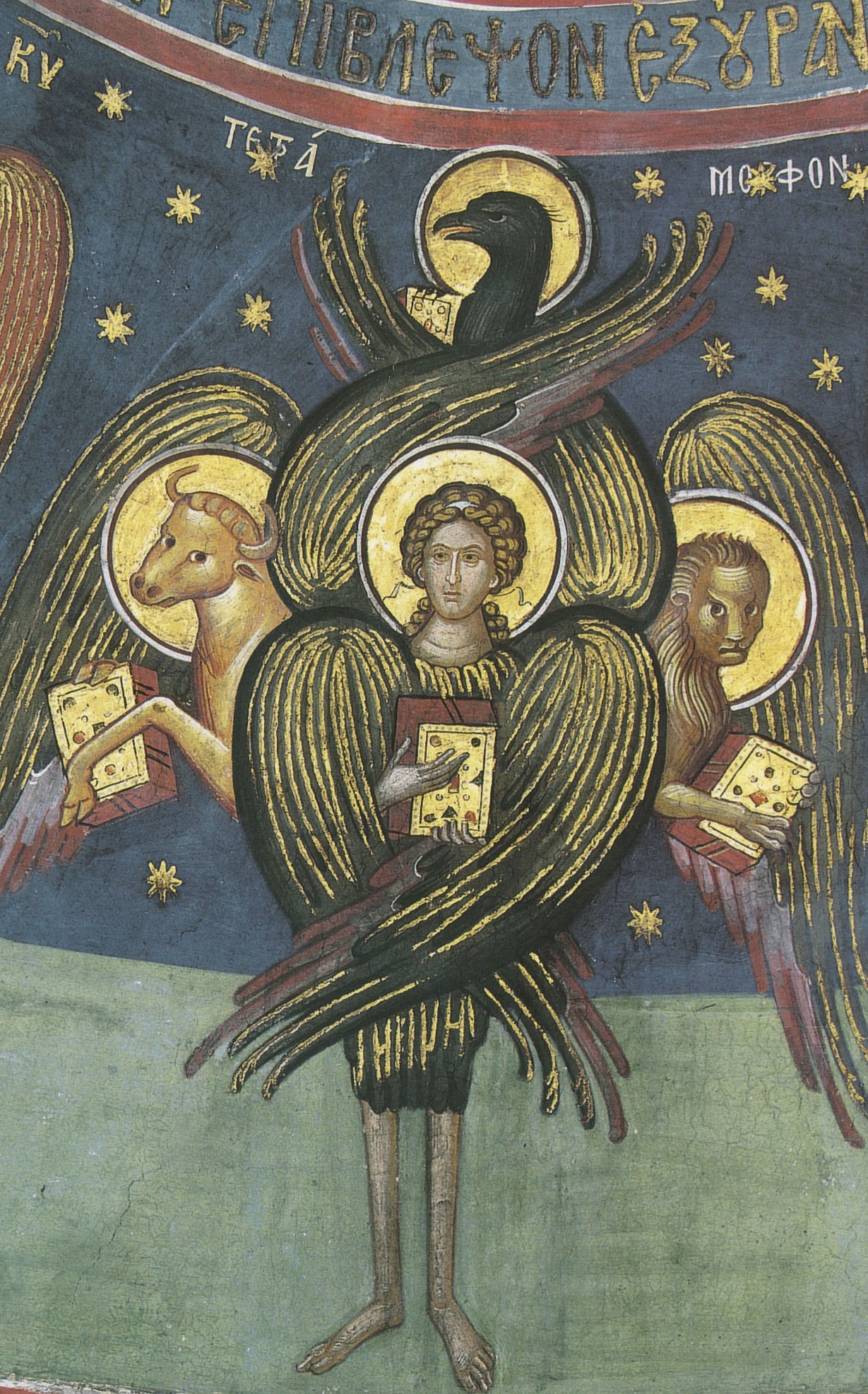I think it's fair to say that the typical image of Cupid in most modern minds (whether they be the highly trained sophisticates of our program or the drooling reality television machines over in the business school) is that of a baby with wings. You all know that it's quite common to see in classical art (as in the Augustus of Prima Porta).
On the other hand in "Cupid and Psyche" the god seems to be "childish" only in the sense that he has smooth, beardless cheeks. But as all the men in the class know, puberty and its attended hormonal changes begin long before the beard comes in; with that in mind, perhaps Psyche married a teenager rather than a baby. Not as gross. (Smith's entry on the significance of ancient beards is pretty neat)
In the Renaissance Cupid was occasionally passed of as an angel, and hence comes misconception that cherubs are are adorable little baby angels that kiss on the cover of Hallmark cards. Consider Boticelli's "Primavera" below, which disguises Venus as the Virgin Mary:
This fresco was painted on the wall of Lorenzo de Medici, who would regularly entertain the pope. Claiming Christian allegory to what is otherwise a blatantly pagan painting might have helped the Pope look the other way in a time when studying Classics was supposed to take a back seat to studying Christianity. That, and the fact that they were cousins and Lorenzo murdered everyone who ever talked back to him.
Baby angels like you find on a modern Hallmark card are often called "cherubs." But in scripture the cherubim are actually terrifying beasts with three faces and six wings that will obliterate you if you cross god. Personally I think this would make for a more interesting greeting card, but ever since Boticelli we're stuck with these weak "flying baby" cherubs.
The charade that passed off Cupid as an angel was thin, but it may have been aided by the concurrent depiction of Cupid as a teenager once regard for Classical study grew and the strictness of a Christian education was loosened. In turn, "teenaged Cupid" depictions may have resulted from the popularity of the Cupid and Psyche story at that time. Because even the most Oedipally-fixated artist doesn't want to draw a naked chick marrying a baby. I hope.
In closing, here is a depiction of Cupid by Caravaggio which I like to call "How YOU doin, girl?":




No comments:
Post a Comment